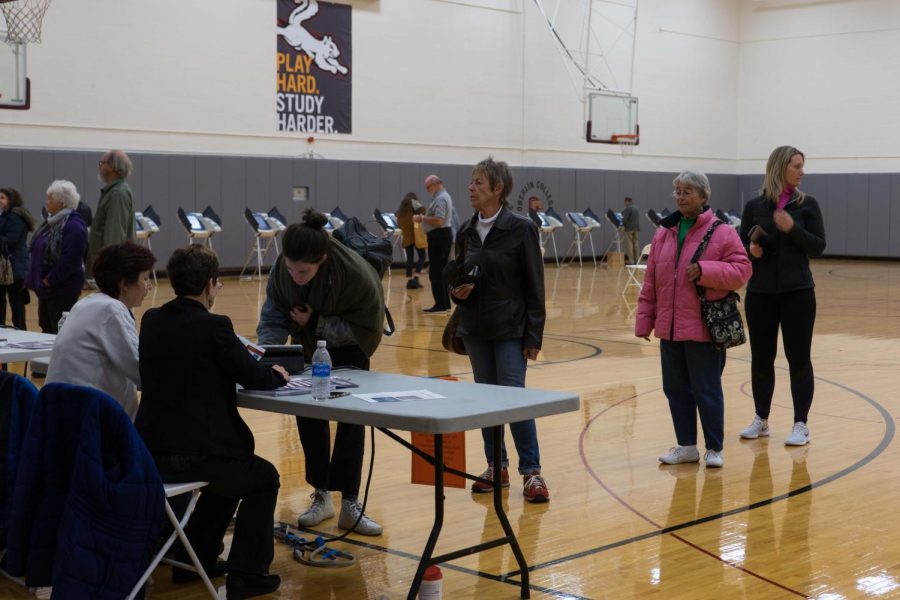REC Profit to go Toward Sustainable Reserve Program
Photo by Bryan Rubin, Photo Editor
Oberlin students and residents vote in Tuesday’s election in the auxiliary gym at Philips gym.
The constituents of Oberlin voted in favor of depositing revenue made through Renewable Energy Credits into a Sustainable Reserve Program in Tuesday’s election.
Oberlin earns RECs by utilitzing renewable energy sources to generate electricity, the collection and sale of which has garnered the city more than $2 million in revenue. Issues 16 and 17 on the ballot addressed how to handle this profit made specifically through sustainably generated electricity. Issue 16 would put all money from the credits into the Sustainable Revenue Fund, while Issue 17 would allow City Council to launch the Community Choice Program for Oberlin citizens to determine the REC revenue distribution.
Issue 16 garnered 1,350 votes in support while 585 residents voted in opposition, according to the Chronicle Telegram.
The Sustainable Reserve Program was originally created in 2007, and since then the city has used it to fund six different projects focused on sustainability. Issue 16 requires that any future changes to the program must be made through legislation.
Community member Robert Henning said he voted for Issue 16 due to its potential benefits for Oberlin homeowners.
“As I understand it, 16 is going to make it possible to use the money that we saved on wise energy usage to help people improve their homes and save energy,” he said.
Many College students came to the polls to express their desire to help the city become more environmentally friendly.
“I want the city to do things that encourage a greater use of renewable resources and [attempt] to take away any dependence on fossil fuels,” College first-year Lucy Kamisky said. “They’re going to spend money on a lot of things, and I think that just having some of it be environmentally directed is a good idea.”
While Issue 16 passed, Issue 17 did not. Issue 17 collected 749 votes in favor of the Community Choice Program, but was ultimately opposed by 1,163 voters.
Had the issue won, 85 percent of the revenue would have been returned to Oberlin’s highest ratepayers, including the College. All ratepayers’ electricity bills would have been reduced, and any money left over would have been returned to the city with the approval of the ratepayers.
Some voters are disappointed with the results of the election.
“I [liked] the idea of having a choice [about] what I do with whatever [money is left],” resident Eric Cowley said. “It’s great thinking of the future and what we need in this community for furthering environmental causes, but I still like the idea of having a choice [about] what happens to that money.”
Community member Barbara Fuchsman disagreed.
“While I understand why people think it’s a good idea to return funds to where they may have come from, at the same time this is a unique chance because this windfall isn’t going to keep coming or come again, it [looks] like, with this administration,” Fuchsman said. “It’s a chance to really do something substantial for the health of this city — at the same time working for social justice, [while] creating a sustainable future.”
Though not everyone sees it as a negative development.
“I’m delighted that we’ll be able to have that money in a sustainable reserve fund and look for ways to help the entire community and to have it address our climate action goals,” said City Councilwoman Linda Slocum.
By investing in the Sustainable Reserve Program, Oberlin maintains its commitment to the Climate Action Plan and hopes to become carbon-neutral by 2020. Environmentally concerned Oberlin residents like Fuchsman will look forward to an increase in funding for issues related to sustainability as a result of the passing of Issue 16.







